Introduction
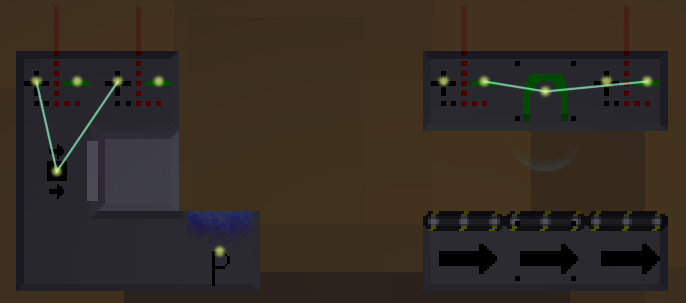
Any sensor will activate the piston (on the left). All sensors need to be active to release the magnet (on the right).
However, if we want to activate a piston when all sensors are active or release a magnet when any sensor is active, we have to make something a little bit more advanced.
Simple Piston Gates
If we want to activate a piston when two (or more) sensors are active at the same time, we can use an extra sensor and an extra piston. To simplify referring to them, let’s call our initial sensors for our input sensors and our initial piston for our output piston, while we call our extra components for our gate sensor and gate piston respectively.
We can easily make our gate piston activate when any input sensor is active (in the same way we did in the Introduction). However, by instead using the negative side of the input sensors, it will activate if any input sensor is not active. Remember, what we want to check is if all input sensors are active, but we can rephrase that as wanting to check if no input sensors are “not active”. When that is the case, our gate piston will not be active. By using our gate sensor we can detect the state of the gate piston and then control the output piston accordingly.
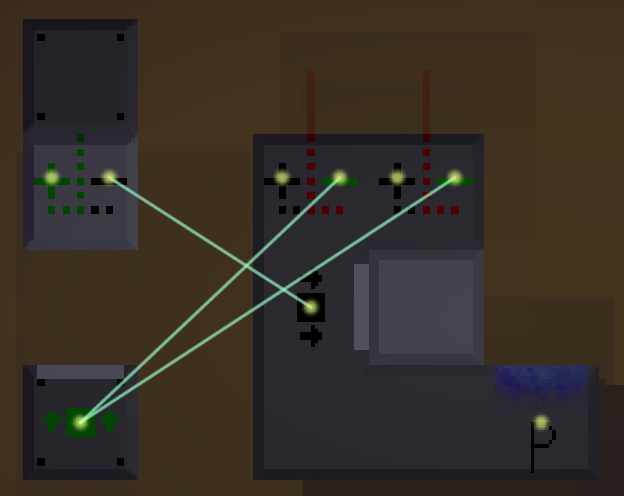
By using an extra sensor and piston we can create an AND-gate. Loose pieces are coloured white. (The reason the piston isn’t extended is simply because we haven’t started the factory)
In a very similar way, we can make a magnet release if at least one sensor is active. Note that we here use the positive side of our input sensors, while still using the negative side of our gate sensor.
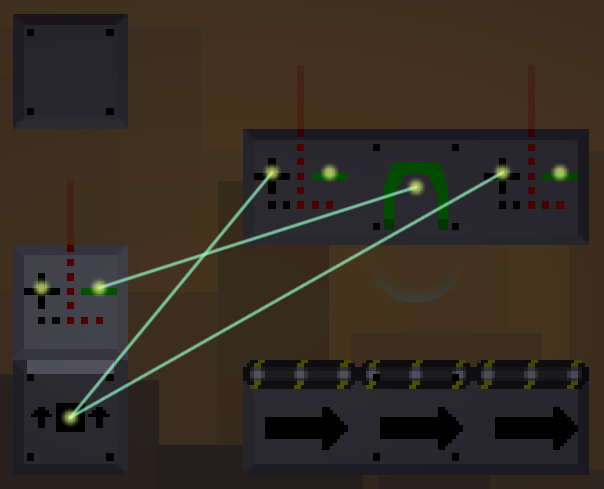
An extra sensor and piston can also become a NOT-gate that we attach to the trivial OR-gate (the OR-gate is just connecting multiple positive sensor wires to the same block).
How you build the gate sensor and gate piston in relation to each other can be done in many different ways. In the image below you can see some of the possible variants.

Variants of the piston gate. Loose pieces are coloured white.
Chaining Gates
As an example, let’s try to build an XOR-gate (EXCLUSIVE OR). An XOR-gate should output a signal if any one input is active, but not if both the inputs are active. To do this we can check whether at least one input is active and not both are, or in other words an AND-gate with inputs from an OR-gate and a NAND-gate. However, since our AND-gate design uses inverted inputs, what we actually need is for our AND-gate to get its inputs from a NOR-gate and an AND-gate.
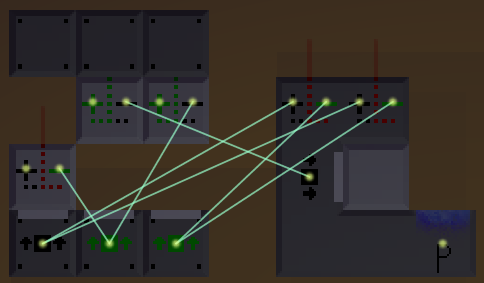
An XOR-gate. The left-most gate is the NOR-gate. The right-most one is the AND-gate of the inputs. The middle one is the AND-gate that uses the other gates’ outputs as its inputs.
Piston Delays
Not only will the delay increase with complexity, the final output may flicker between unstable values and the actual values. This can happen if there are sub-chains in the logic of different length, as that means one sub-chain changes before the other.
As long as there’s a delay to our gates, we will have to consider delayed and unstable outputs that may or may not cause problems in our factories. Logic gates in computers also have tiny delays and to get around that a so called clock is used. The output values are only used when the clock pulses, resulting in any unstable behaviour to be ignored (as it happens between clock pulses). While we could create some sort of clock ourselves, we have access to something computers don’t: Portals.
Instant Gates
The core concept of the portal gate is the fact that sensors can see through a portal, detecting what’s on the other side.

Sensor seeing through a set of portals. Note the red sensor line.
We will never detect anything on the other side though, that’s the whole point. If the sensor line reaches to the other side the sensor’s negative side will activate. We can stop the line from reaching the other side by simply turning off the portal. When the portal is inactive the line can’t go through it and the sensor will instead see the portal block itself, making the positive side activate.
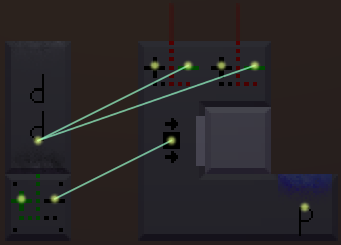
An AND-gate made with a set of portals. Once both sensors activate, the portal will reactivate and the gate sensor will no longer see anything.
Chaining Instant Gates
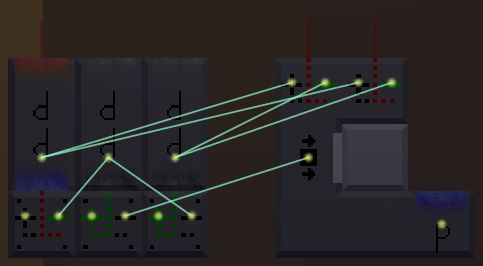
An XOR-gate made with portals. It has a delay of 0 ticks.
However, portal gates can be chained in another way as well. We can give each gate sensor multiple sets of portals. That way, the sensor’s negative side will only activate if all portal pairs are open.
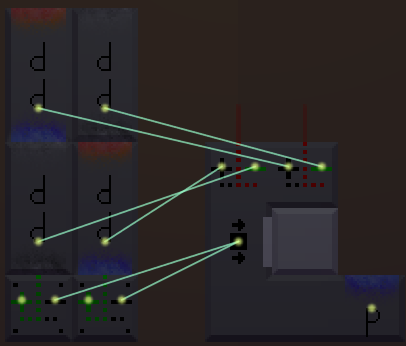
Another XOR-gate. This one only having two parts, one checking for the first input being the only active one, the other one checking if the second input is the only active one.
Most of the time we don’t actually need to use multiple sets of portals, as the input signals can all go to the same one. However, using multiple pairs of portals can make it easier to see what’s going on as it’s easier to see what portal is preventing the sensor line from going through.
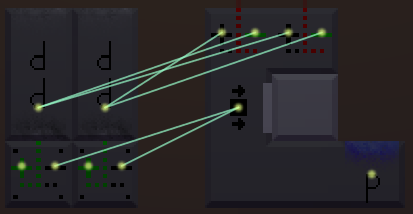
A more compact version of the XOR-gate.
Compact Factories
When building a portal gate, the only thing that’s important is that the sensor can see an empty spot when all portals are open.
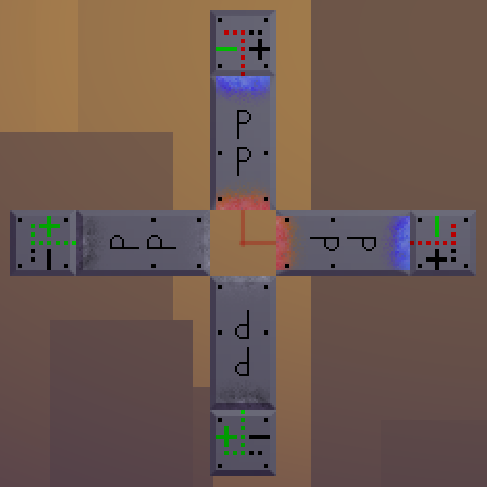
4 portal gates each facing the same empty spot.
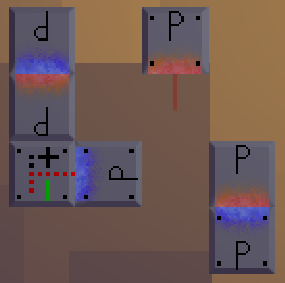
One portal gate with 3 portal pairs.
It should go without saying, that the weirder you build them, the harder it’s going to be to keep a track of what they do.
Real Puzzle Example

Possible solution to “Adder”
